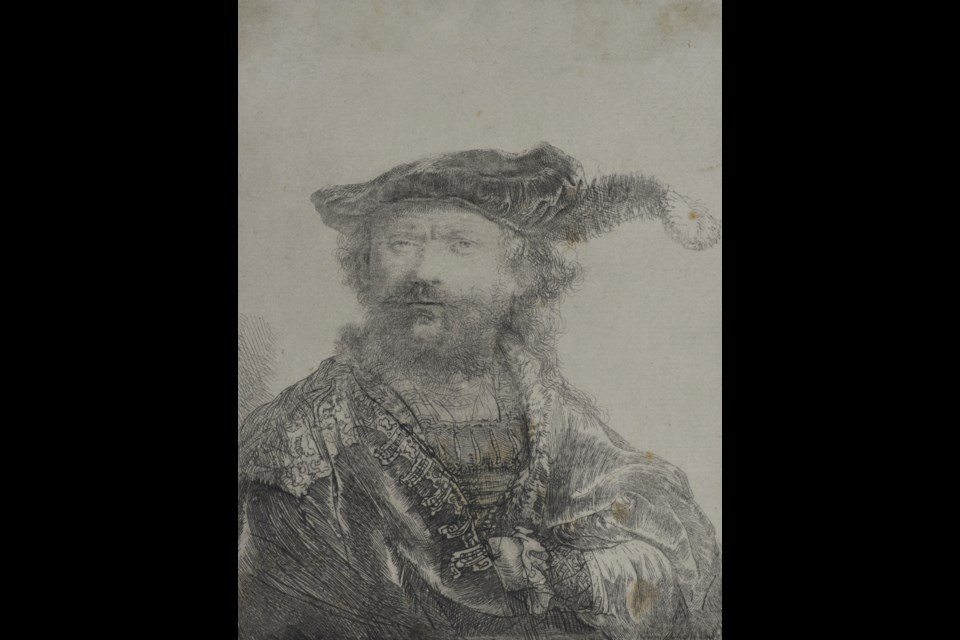There's something about the Burnaby Art Gallery and its location, nestled in the Deer Lake Park enclave, that lends itself as the ideal backdrop for the Dutch masters exhibitions currently underway inside.
The serenity of the landscape is reflected on the walls of the lower gallery, where the National Gallery of Canada exhibition Storms and Bright Skies: Three Centuries of Dutch Landscapes has taken up residence.
The poise and elegance of the gallery itself, housed in Ceperley House on the former Fairacres estate, is equally a fitting backdrop for the Inner Realms: Dutch Portraits exhibition on its upper floor.
Storms and Bright Skies offers up a collection of landscape works on paper, from its emergence in the early 17th century and its rise during the Dutch Golden Age to its extension into the 18th and 19th centuries.
It traces familiar elements of the Dutch landscape through a series of groupings on themes including water (covering windmills, canals and seascapes), heroic trees, fantasy landscapes and From City to Country, which offers up an artistic nostalgia for the rural life in the urbanizing country of the time.
The works encompass a variety of media - pen and ink, watercolour, chalk and etchings -and include, most notably, four etchings by the most well-known master of them all, Rembrandt van Rijn.
Rembrandt's The Three Trees, dating to 1643, is a particularly striking addition, harkening as it does back to the symbolism of the crucifixion at Calvary, with storm clouds gathering in the background.
Other notable works come from Jan Brueghel (the Elder), with a village landscape and a mountain landscape among the earliest of the works on display.
Cane notes the mountain landscape as an example of the kind of work that was common in its time - offering up, as it does, a view of rocky hills and distant peaks that bears little resemblance to the artist's homeland.
"That's what we see a lot, in the precursor to the Golden Age, is more imaginative landscapes," Cane notes, pointing out that people obviously wouldn't have travelled as much.
She notes that the landscape work has broad appeal because the scenes it reflects, in many cases, are so universal - Brueghel's mountain landscape could easily have been based on British Columbia. Another scene with universal appeal, Cane points out, is a watercolour by Jan Hendrik Weissenbruch, Pastureland (c. 1880-1894) - which could easily picture farmland in Delta.
Upstairs, Cane has gathered a collection of portraits to trace the story of the changing Dutch world at the time.
"Portraits, at a time of vast expansion of a rising merchant class, became much more popular for the everyday person," she notes.
While once portraiture was reserved for religious scenes or great leaders - both of which are included in the exhibition - it blossomed as artists began to paint ordinary people, including themselves and their own families.
At the same time, portraiture moved from being less "photographic" in style.
"It quickly turned in the 17th century to not only the outer documentation of the individual ... but also the emotional representation," she notes.
Nowhere is this more true than in the self-portraits of artists, among them a drawing of a pensive, introspective Leedert van der Cooghen which Cane cites as an excellent example of the type.
Rembrandt, of course, was known for his self-portraits - many moody and brooding, reflecting the emotional turmoil of a life in which he lost his wife and several children.
The self-portrait on display here, however, is from a happier time - and it hangs next to studies of Rembrandt's wife, Saskia, capturing a more prosperous and successful time in the artist's world.
The exhibition also includes work by artists about whom little is known, including Jan Van Dynter's oil Man With Pipe, which serves as the exhibition's feature image.
Both exhibitions are on at the gallery until Nov. 17.
The gallery is at 6344 Deer Lake Ave. and is open Tuesday to Friday, 10 a.m. to 4:30 p.m., Saturday and Sunday from noon to 5 p.m.
Admission to the gallery is by donation, with a suggested admission to these exhibitions of $10.
For more information, call the gallery at 604-297-4422 or see www.burnabyartgallery.ca.



